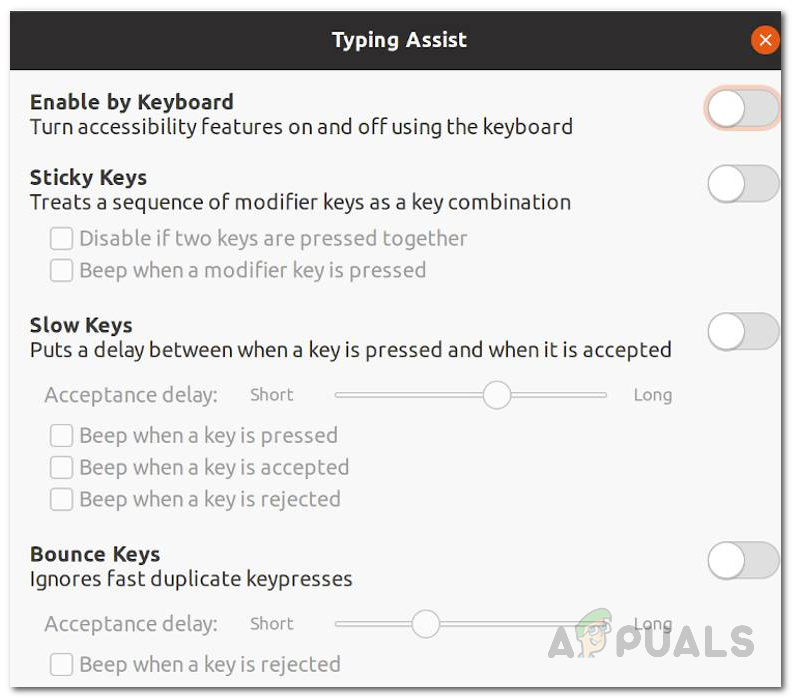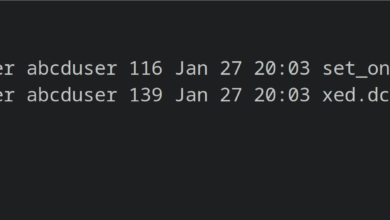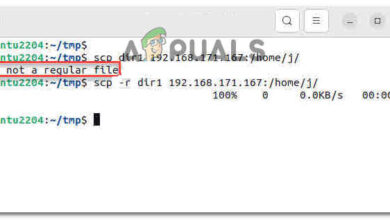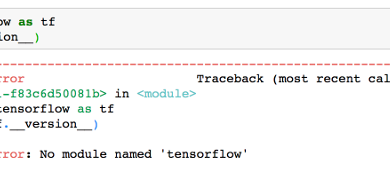[FIX] Ubuntu 20.04 LTS Keyboard and Mouse not Working
Ubuntu is the most popular as well as the most widely used Linux distribution. The new LTS release of the distro brings many new features and much faster boot time. If you are an LTS user, upgrading to the new release is an obvious option. However, for some users, that didn’t go so well. Users have reported that their keyboard and mouse stopped working after they installed the newest release. The main problem has been with the keyboard though.

As it turns out, the keyboard works perfectly fine everywhere else except on the Desktop. While some users are stuck with the keyboard not working on the login screen, there are also victims that aren’t able to use their mouse along with the keyboard. We’ve investigated the matter and have found the potential causes of the issue along with the workarounds that will get you back on the road. So, without further ado, let us get started with the possible causes of the problem.
- Keyboard Layout — One of the main reasons your keyboard may not work is if you have the wrong keyboard layout selected in the settings. If you installed a fresh copy, it could be that you selected the wrong layout or the upgrade might have messed the keyboard layout settings. This can be easily resolved by choosing the correct keyboard layout.
- Slow Keys Enabled — Another cause of the problem can be the slow keys feature that comes in the GNOME desktop environment. If this case is applicable to you, you just have to disable the slow keys feature from the accessibility menu and you should be good to go.
- External USB Devices Connected During Installation — If you are one of the victims of both the mouse and keyboard not working at all, it could be due to the other external USB devices that are connected to your system during the installation. This has been reported by a user and you can easily fix by reinstalling the operating system when there are no other devices connected.
- GNOME Desktop Icons — As it turns out, if you are not able to use your keyboard only on the desktop, such as deleting a file or whatever, it could be due to the bugged desktop icons that have been reported by users. A fix to this would be to update your system to the latest upgrades available.
With all of that out of the way, we can now focus on the different workarounds that you can apply to get rid of the problem. Please follow through.
Method 1: Check Keyboard Layout
This is the most obvious thing that you should do whenever you face any issue regarding your keyboard. As it turns out, if you are not able to use your keyboard, it could be due to the keyboard layout being of a different language. If this case is applicable to you, the resolution is pretty simple. What you have to do is change the keyboard layout from the settings and you should be good to go. Follow the instructions below to change the keyboard layout:
- First of all, search for Settings and then open up the window. Alternatively, you can also go to the Settings by clicking your username on the top bar and then selecting System Settings.
- In the Settings window, navigate to the Region and Language tab at the bottom.

Region and Language - Check the entry under Input Sources. Make sure it is the same as your keyboard and if not, just click the + icon to add your keyboard layout.
- Once added, you can remove the previous input source by clicking the Trash bin icon.
Method 2: Turn off Slow Keys or Bounce Keys
Slow keys and bounce keys are features of the GNOME desktop environment. Slow keys is basically a feature that puts a delay between when the letter key is pressed on the keyboard and when that letter is displayed on the screen. If the slow keys feature is enabled, you will have to hold each key that you wish to press before it is registered.
Bounce keys is almost a similar feature. Intended for users with physical disabilities, bounce keys is a feature that tells the system to ignore repeated and rapid presses of the same key based on its configuration. You need to turn these features off to restore the input to the default state. Here’s how to do it:
- First of all, open up the Settings window from the top bar by clicking on your username and clicking Settings from the drop-down menu.
- After that, navigate to the Universal Access tab.
- Under Typing, click on the Typing Assist (AccessX) option.

Typing Assist - Just Disable typing assist option from the pop-up window which will turn off both the slow and bounce keys features.
Method 3: Update your System
If you are not able to use the keyboard only on the desktop screen and it works perfectly fine everywhere else, then it is probably because of the bug with the gnome desktop icons. If this case is applicable to you, it is evident that your system is not up-to-date and needs to be updated as this bug has been fixed. To update your system, do the following:
- First of all, open up a Terminal window.
- After that, enter the following command to update the packages database:
sudo apt update

- Once this command has run successfully, enter the following command to initiate the upgrade:
sudo apt upgrade
- When prompted, type Y to start the upgrade. Wait for it to complete.
- Once it has completed, reboot your system and see if the issue is fixed.
In case the issue is still not fixed, what you can do is install different desktop icons and uninstall the gnome-desktop-icons for the time being. To remove the gnome desktop icons package, use the sudo apt purge gnome-desktop-icons command. Once removed, you can install another file manager and you’ll be good to go.
Method 4: Reinstall Ubuntu
As it turns out, if you installed a fresh copy of the Ubuntu 20.04 version, and you have other external media connected to the system, the problem of keyboard and mouse not working could be because of that. If this case is applicable to you, what you have to do is reinstall Ubuntu while making sure that no other external USB devices or other media are connected to the system except the USB drive that has the installation media. If you have some important information, you can either back it up or don’t partition the home directory during the installation.





